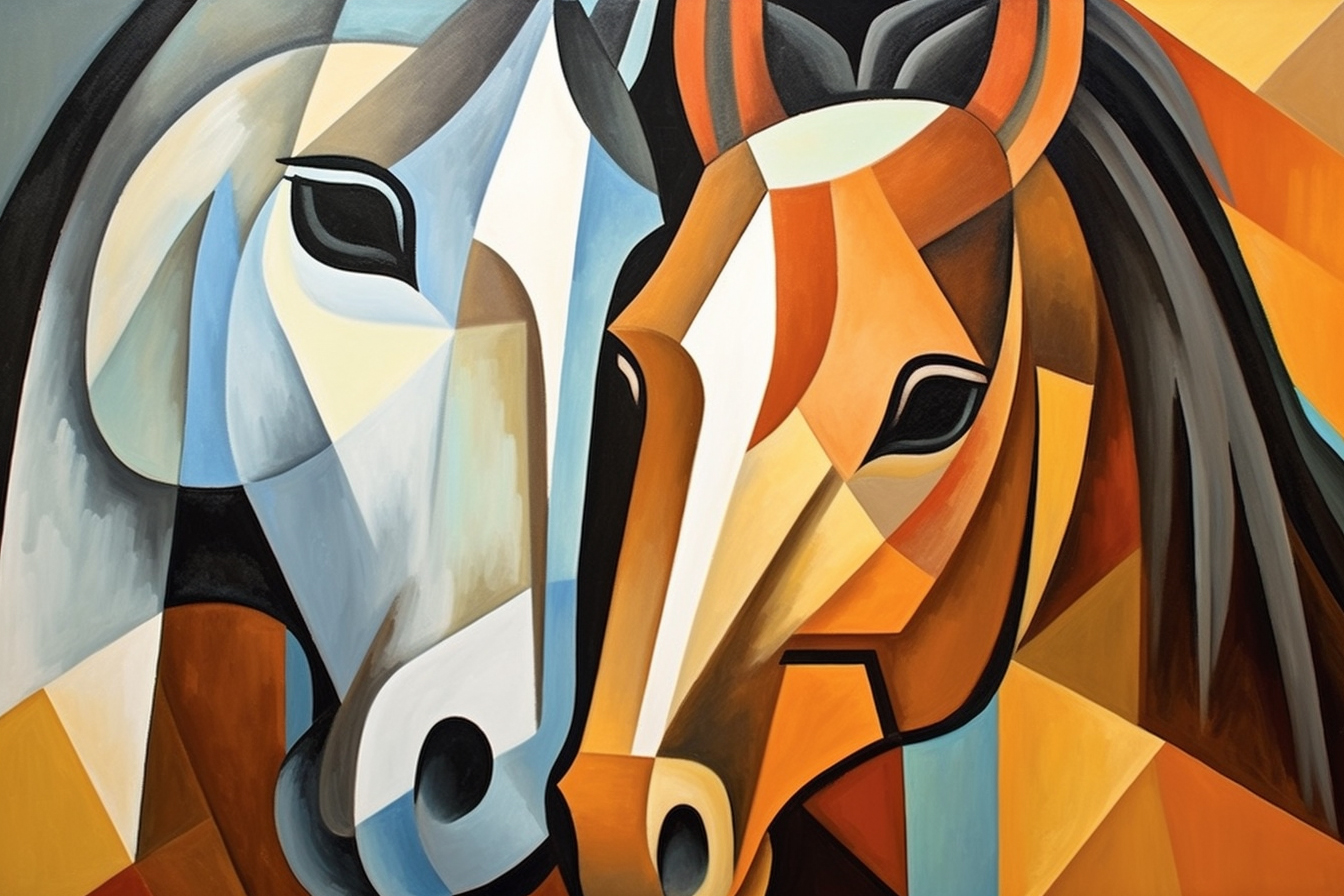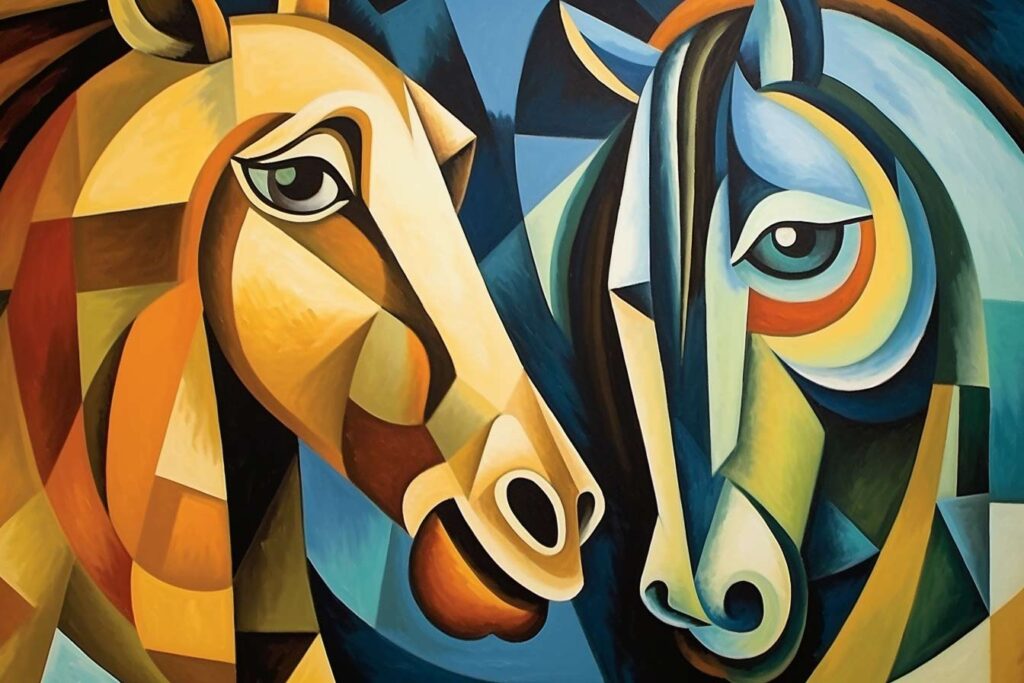The Geometric Soul of the Beast
In the traditional arts, an artist paints a portrait or a scene from a single vantage point. One sees the world as if through a fixed lens, capturing just one aspect of reality. Yet, there is so much more to perceive and interpret. Imagine, then, an art form that seeks to break away from the limiting constraints of a single perspective.
The Horse: A Dance of Angles
Enter the realm of abstract animals, where the marriage of geometry and spirit gives birth to a new vision of nature. The horse, a majestic creature of power and grace, becomes our muse. But rather than depicting it in the conventional manner, let’s engage in a cubist exploration.
Imagine gazing upon the horse from the front, the side, from above, and even from within. Instead of a flat representation, the canvas blooms with facets, each providing a fresh perspective on the same subject. The mane that flows might be rendered in sharp geometric patterns, while the muscular form of the animal, typically smooth and flowing, might be translated into a series of angular planes. The hooves, the eyes, the flanks—each aspect of the horse becomes a complex interplay of lines and forms.

The Echo of Mastery in Absence
True to the essence of Cubism, the depiction doesn’t just stop at a fractured reality. Within these abstract forms lies a subtle nod to the masters of this art. The touch of genius that once revolutionized painting can be seen in the way each angle is chosen, each plane is shaded, and each facet of the horse comes to life. It’s a harmonious chaos, where abstraction meets recognition.
Marrying Past and Present
In the modern world, where rapid change is the norm and where the past often feels distant, such artistic endeavors bridge the gap between what was and what is. By embracing the cubist philosophy in portraying animals, artists not only push the boundaries of visual representation but also link age-old admiration for nature with contemporary modes of expression.
The geometric soul of the horse, abstracted yet familiar, becomes a testament to the power of art to reinvent and reinterpret. It stands as a beacon for artists and admirers alike, urging them to see the world not just from where they stand, but from every conceivable angle.
